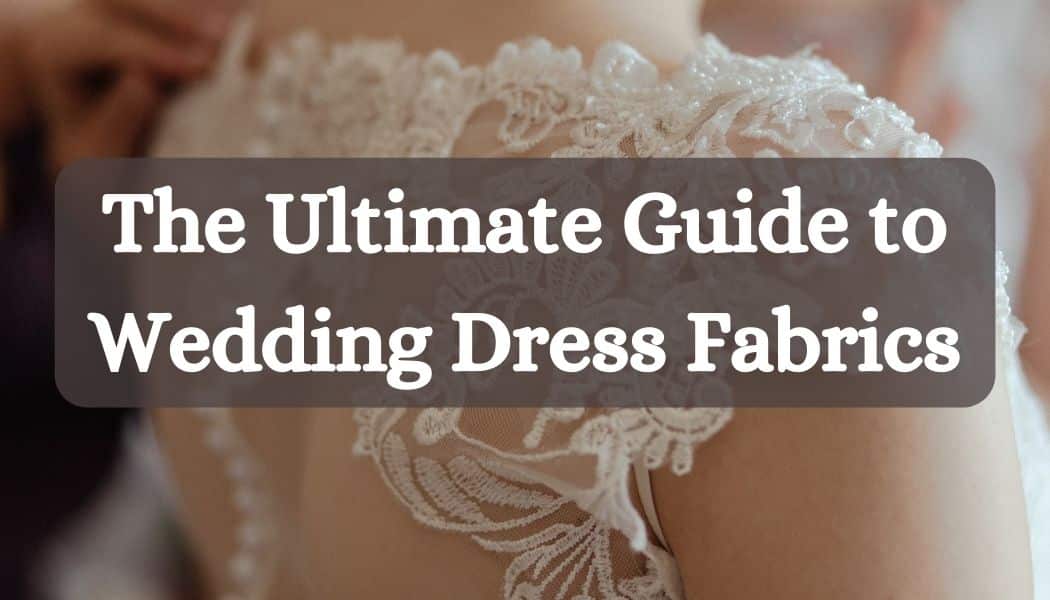
Table of Contents
Introduction
Your wedding dress is not just a piece of clothing; it’s a symbol of your love and commitment, a reflection of your taste, and a remembrance you’ll cherish forever. Selecting the suitable fabric is a critical decision that influences not just the look of the dress but also how it feels against your skin and how it moves with you.
This guide will provide all the information you need about different wedding dress fabrics, including insights based on personal experiences, expert opinions, and current trends. Prepare to embark on an exciting journey as unique as the wedding day.
Wedding Dress Fabrics
Silk – The Timeless Choice
Silk is often considered the most traditional and luxurious fabric for wedding dresses. For centuries, silk has been a favourite among brides for its smooth texture and rich look.
- Types of Silk: Satin, Charmeuse, and Dupioni are popular silk types, each offering a unique appearance and feel.
- Why Choose Silk?: Silk’s timeless beauty, elegance, and comfort make it an excellent choice for classic and contemporary dresses.
Lace – The Epitome of Romance
There’s something magical about lace that adds romance and sophistication to a wedding gown.
- Types of Lace: Alençon, Chantilly, and Venise are just a few examples of the many styles available.
- Styling Lace: Whether used sparingly as an accent or as the primary fabric, lace offers endless design possibilities.
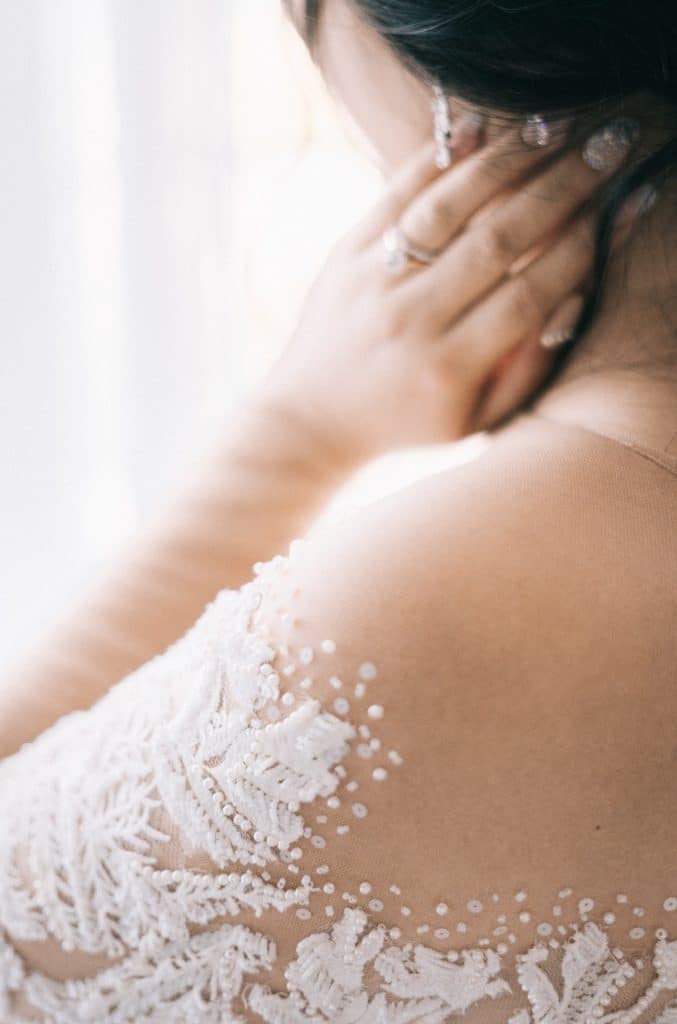
Satin – The Alluring Gloss
Satin is known for its alluring gloss and drape. It’s perfect for brides looking for a fabric that elegantly contours the body.
- Types of Satin: Duchess Satin, Crepe Back Satin, and more.
- Why Satin?: If you desire a fabric that shines under the lights and offers a sleek appearance, satin might be your choice.
Tulle – The Fabric of Fairytales
Tulle is synonymous with ballerina tutus and fairytale wedding dresses. Its lightweight and airy nature allows for dramatic volume and flow.
- Working with Tulle: Tulle can be layered, ruched, or adorned with embellishments for various effects.
- Popular Combinations: Tulle is often combined with lace or Silk for a dreamy look.
Organza – The Contemporary Chic
Organza is a modern fabric that offers a crisp look while still maintaining some translucence. It’s a favourite for avant-garde designs.
- Organza Styling Tips: Organza’s stiffness allows for innovative structures and silhouettes.
- Why Organza?: If you’re looking for a fabric that supports creative designs and offers a fresh, contemporary vibe, consider Organza.
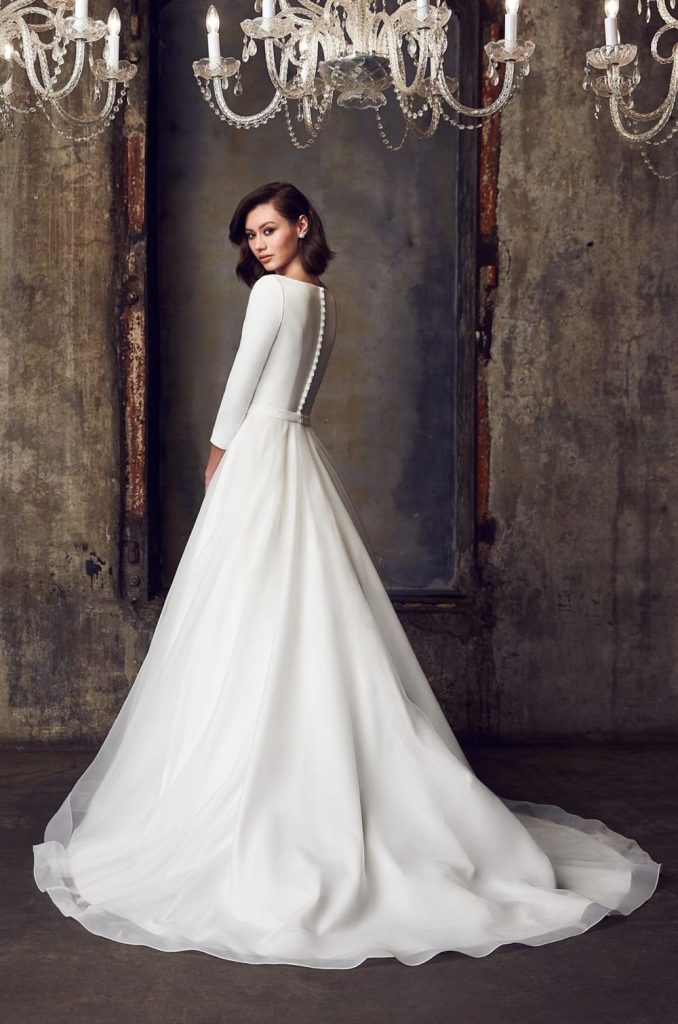
Velvet – The Vintage Revival
Velvet has made a strong comeback in the bridal world. Its plush feel and deep colour intensity make it perfect for winter weddings.
- Why Velvet?: Velvet adds richness and warmth, ideal for vintage-themed weddings or luxurious evening affairs.
- Styling with Velvet: Velvet pairs well with lighter fabrics and can be used for accents or as the main fabric.
Chiffon – The Bohemian Breeze
Chiffon is favoured by bohemian brides for its soft and flowing nature. It lends an ethereal quality to the gown.
- Why Chiffon?: If you love a free-spirited, effortless look, chiffon might be your perfect fabric.
- Working with Chiffon: Layering, pleating, and draping techniques work beautifully with chiffon.
Considerations for Choosing Wedding Dress Fabrics
Choosing the suitable fabric for your wedding dress is much more than a matter of taste; it’s a complex decision that requires careful consideration of various factors. Each aspect is crucial in finding the perfect material for your big day, from seasonal appropriateness to personal style, body type, and budget. Here’s a detailed look into these considerations to help you make a well-informed choice.
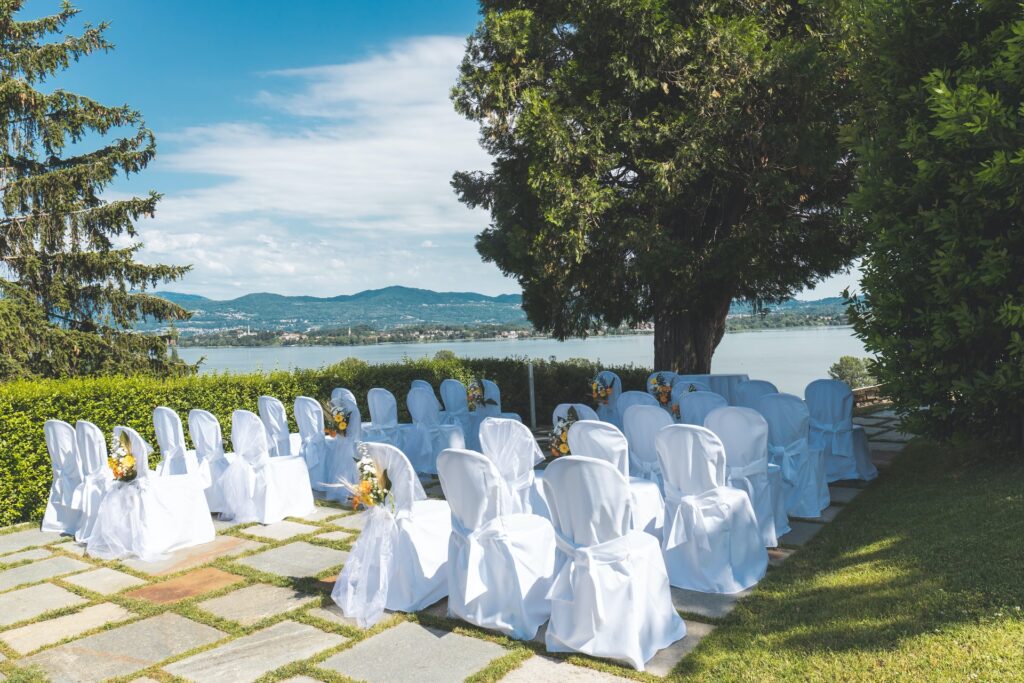
Seasonal Considerations
The season of your wedding is perhaps one of the most vital aspects to consider when selecting your wedding dress fabric. You must align your choice of material with the climate and weather conditions, ensuring comfort and style.
Summer Wedding Fabrics
For a summer wedding, think breathable and light. You’ll wear your dress for many hours, possibly in the hot sun, so comfort should be a top priority.
- Chiffon: Known for its lightweight and sheer qualities, chiffon is perfect for a summer wedding. It flows beautifully and provides an ethereal look.
- Light Silk: Silk offers a touch of luxury without weighing you down. Lightweight Silk can add elegance while keeping you cool.
Winter Wedding Fabrics
Winter weddings call for more affluent, heavier fabrics that look opulent and keep you warm.
- Velvet: Velvet is synonymous with luxury and warmth, making it a perfect choice for a winter celebration. Its soft texture adds richness to the gown.
- Heavy Satin: Satin offers a glossy finish and can be found in heavier weights, ideal for adding structure and warmth to a winter wedding dress.
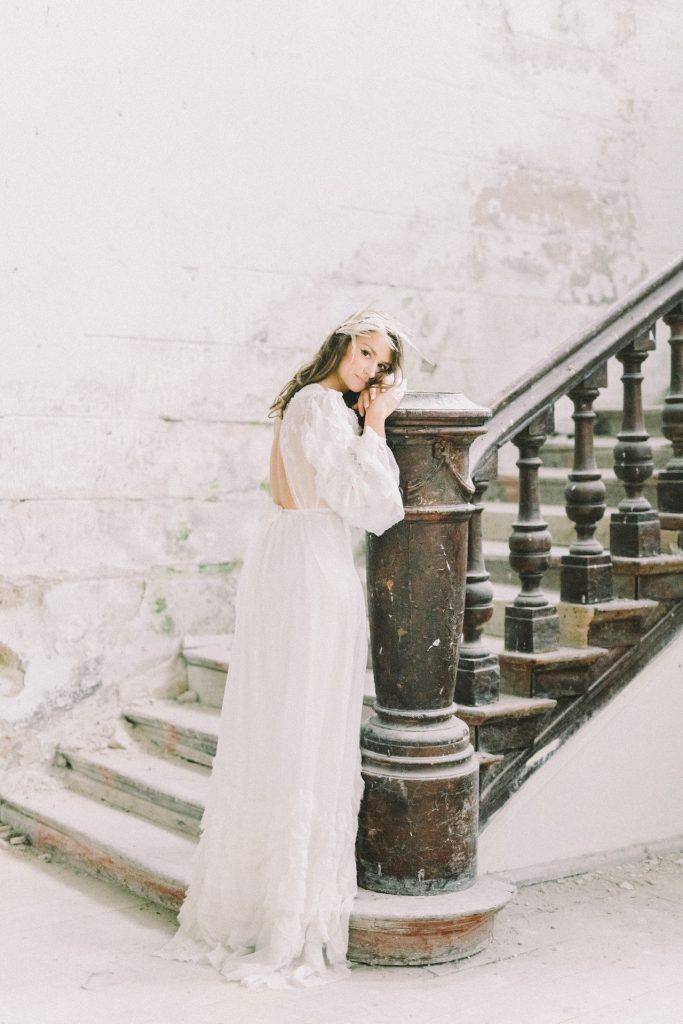
Personal Style and Body Type
Your body type and personal style are unique, and your wedding dress should reflect that. Some fabrics drape softly around your figure, while others provide structure and shape.
Flattering Fabrics for Different Body Types
An expert tailor or designer will consider your body’s shape and contour and can advise on fabrics that accentuate your best features.
- A-line Shapes: Fabrics like Organza or taffeta that hold shape well can create a flattering A-line silhouette.
- Curvy Figures: Soft and draping fabrics like Silk or jersey can enhance curves.
Reflecting on Your Personal Style
Your wedding dress should be a reflection of your personality. Whether you’re a minimalist, a romantic, or a fashion-forward bride, there’s a fabric to match your style.
- Romantic Brides: Fabrics like lace and soft tulle can create a whimsical and romantic look.
- Minimalist Brides: Clean lines and simple fabrics like crepe or mikado silk can resonate with a minimalist aesthetic.
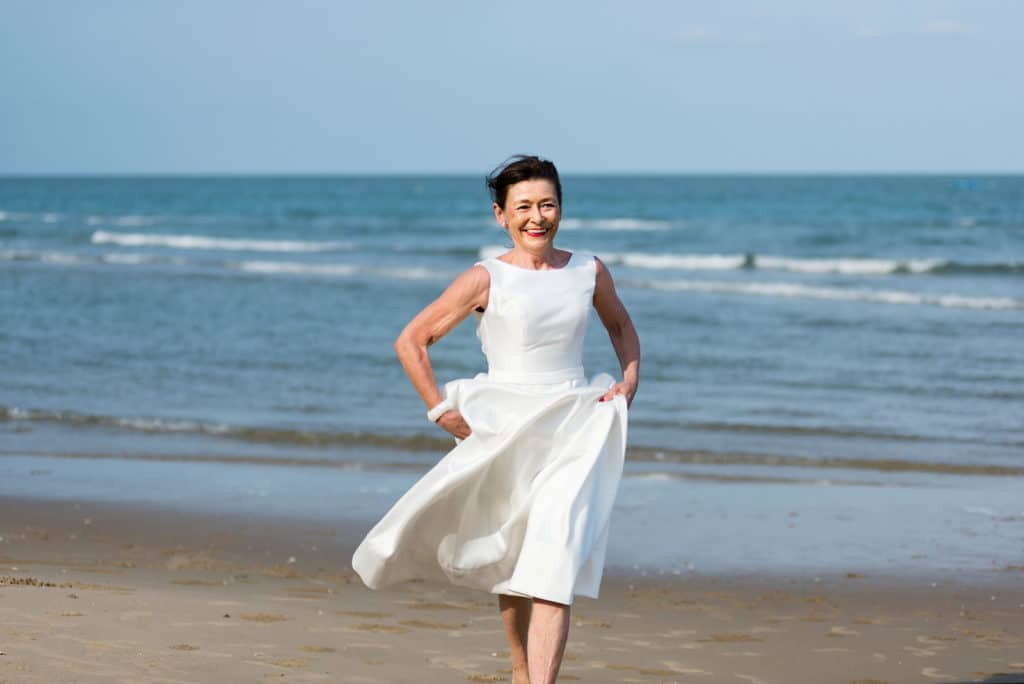
Budget Considerations
The fabric can significantly influence the overall cost of the wedding dress. Knowing your budget can help you explore suitable options without compromising on quality.
High-End Choices
Fabrics like pure Silk, handmade lace, or designer-specific materials come at a premium. They offer an exquisite look and feel but can be pretty expensive.
Budget-Friendly Options
On the other hand, synthetic blends and widely available fabrics like polyester satin or rayon can still offer a beautiful look without breaking the bank. They can be crafted to mimic more expensive materials at a fraction of the cost.
Trends and Innovations in Wedding Dress Fabrics
The world of wedding dress fabrics is ever-evolving. With designers continually pushing the boundaries of creativity, brides are presented with more unique and personalized options than ever before. The following trends and innovations stand out for their ingenuity, artistic flair, and connection to the past and the future. Each brings a distinct touch to bridal fashion, making the choices rich and diverse.
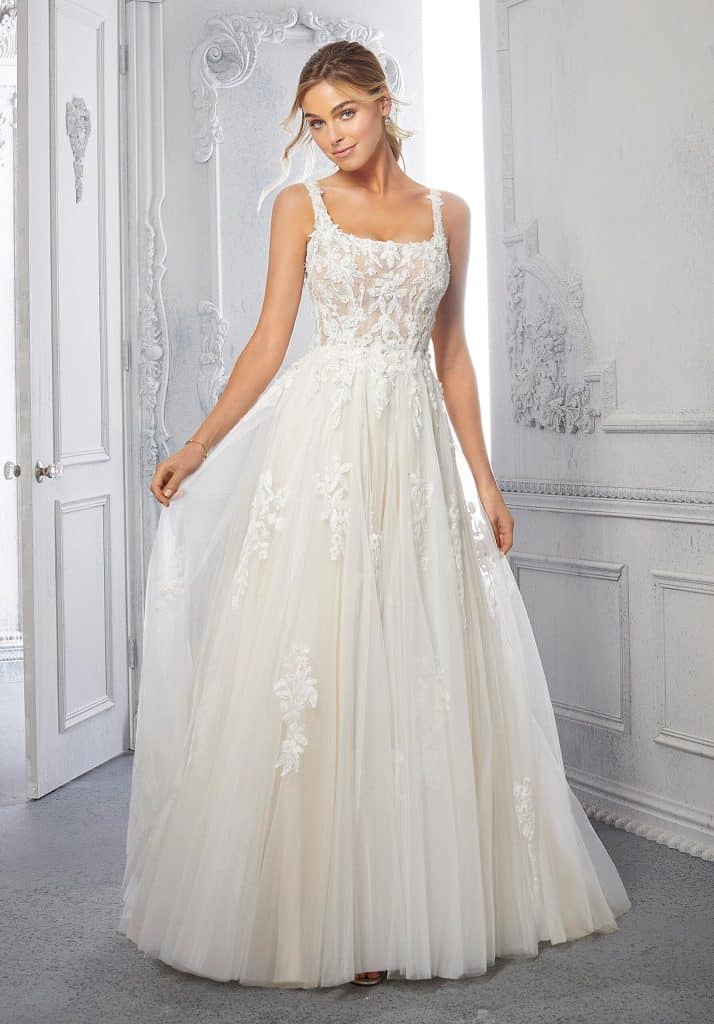
Fusion Fabrics – Blending Traditions
Fusion fabrics are a groundbreaking concept that marries different textures and patterns to craft something new. They bring together the old and the new, the traditional and the modern. It’s like a dance of different cultures and eras that add a unique twist to conventional designs.
Imagine a wedding dress that seamlessly combines elegant lace with rugged tweed or pairs shiny silk with raw linen. This eclectic mixture creates a visually appealing look and reflects a bride’s multifaceted personality and journey. Fusion fabrics are more than just a style statement; they celebrate individuality and creativity.
3D Floral Appliqués – A Modern Touch
3D floral appliqués have taken the fashion world by storm, and the wedding industry is no exception. These are not your ordinary flower patterns. They literally ‘pop’ off the fabric, creating a visually stunning 3-dimensional effect.
This technique provides an opportunity to add a tactile experience to the visual appeal of the dress. As you walk down the aisle, the flowers seem to come to life, adding a fresh, modern look. Designers can play with different fabrics, sizes, and colours to create a garden-like illusion on the gown. It’s a perfect way to bring a touch of nature into the celebration in an unexpected yet utterly enchanting way.
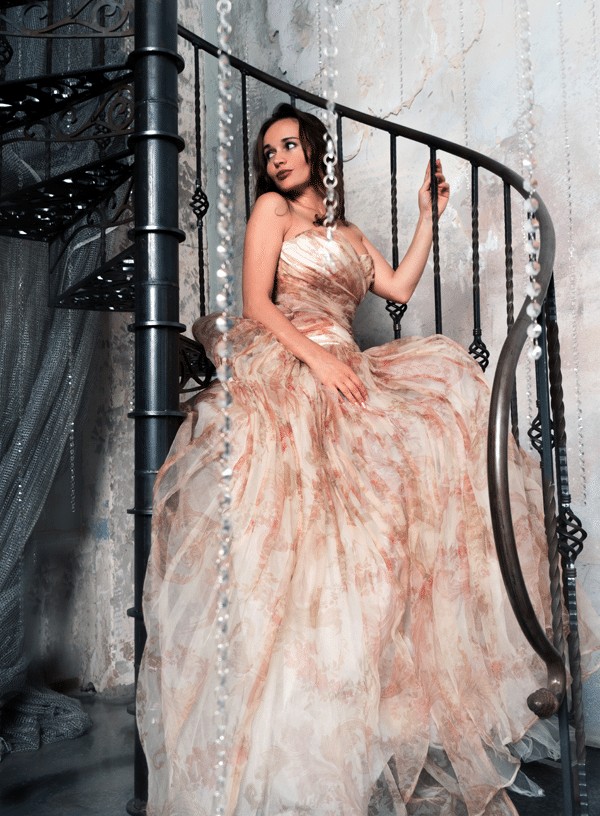
Metallic Threads – Shine with Elegance
Metallic threads and shimmering fabrics are making waves in bridal fashion. They add a touch of glamour without going overboard, offering a subtle shine that catches the eye but doesn’t overshadow the bride.
Imagine the soft glow of gold or the incredible sheen of silver woven into the fabric. It can be a complete metallic gown for the daring bride or just delicate hints of sparkle for the one who loves understated elegance. The way metallic threads reflect light adds a magical ambiance, making the bride shine metaphorically and literally. It’s an elegant way to add a contemporary edge to a timeless garment.
Vintage Revival – Old is Gold
The saying “Old is Gold” holds a special place in the bridal fashion world. The trend of reviving vintage fabrics and lace is more than just a nod to the past; it’s a way to breathe new life into timeless traditions.
Designers are scouring antique stores and family heirlooms to find authentic materials that tell a story. These vintage elements are reincorporating into modern designs, from intricate Edwardian lace to sumptuous Victorian Silk. The result is a dress that’s rich in history and character. For the bride who values heritage and wants to wear a piece of history, this trend offers an opportunity to connect with the past while looking stunningly present. The vintage revival is a beautiful way to honour the time-tested beauty of wedding dress fabrics.
Summary: Fabrics for Bridal Gowns
Wedding Dress Fabrics:
- Silk: Luxurious, traditional, various types
- Lace: Romantic, various styles, versatile designs
- Satin: Glossy, contouring, sleek appearance
- Tulle: Fairytale-like, lightweight, often combined with lace or Silk
- Organza: Crisp, modern, innovative structures
- Velvet: Vintage revival, plush, suitable for winter
- Chiffon: Soft, flowing, favored by bohemian brides
Considerations for Choosing Fabrics:
- Seasonal Considerations: Different fabrics suitable for summer and winter weddings
- Personal Style and Body Type: Fabrics to accentuate features, reflect personality
- Budget Considerations: High-end choices to budget-friendly options
Trends and Innovations:
- Fusion Fabrics: Blending traditional and modern
- 3D Floral Appliqués: Modern, 3-dimensional effect
- Metallic Threads: Elegant shine
- Vintage Revival: Incorporating vintage fabrics and lace
FAQ: Wedding Dress Fabrics
What is the most popular fabric for wedding dresses?
Silk remains one of the most popular choices for wedding dresses, offering a luxurious look and feel.
How do I choose the suitable fabric for my wedding dress?
Consider factors such as the season, body type, personal style, budget, and ethical considerations. Consulting with a professional designer or tailor can provide personalized guidance.
Can I mix different fabrics in my wedding dress?
Absolutely! Mixing materials can add depth and character to your dress. Popular combinations include lace with tulle or Silk with Organza.
Is it necessary to stick to traditional fabrics for my wedding dress?
Not at all. The best material for your dress is the one that makes you feel beautiful and comfortable. It’s your day, so choose what resonates with you.







![Celebrity-Inspired Wedding Dresses from the Red Carpet to the Aisle [2024]](https://i0.wp.com/www.bestforbride.com/bridal-shop/wp-content/uploads/2023/12/Experience-the-Magic-Celebrity-Inspired-Wedding-Dresses-from-the-Red-Carpet-to-the-Aisle.jpg?ssl=1)
![Stay Prepared for Unexpected Last-Minute Wedding Dress Emergencies: 8 Key Scenarios [2024]](https://i0.wp.com/www.bestforbride.com/bridal-shop/wp-content/uploads/2023/12/Stay-Prepared-for-Unexpected-Last-Minute-Wedding-Dress-Emergencies-8-Key-Scenarios.jpg?ssl=1)




